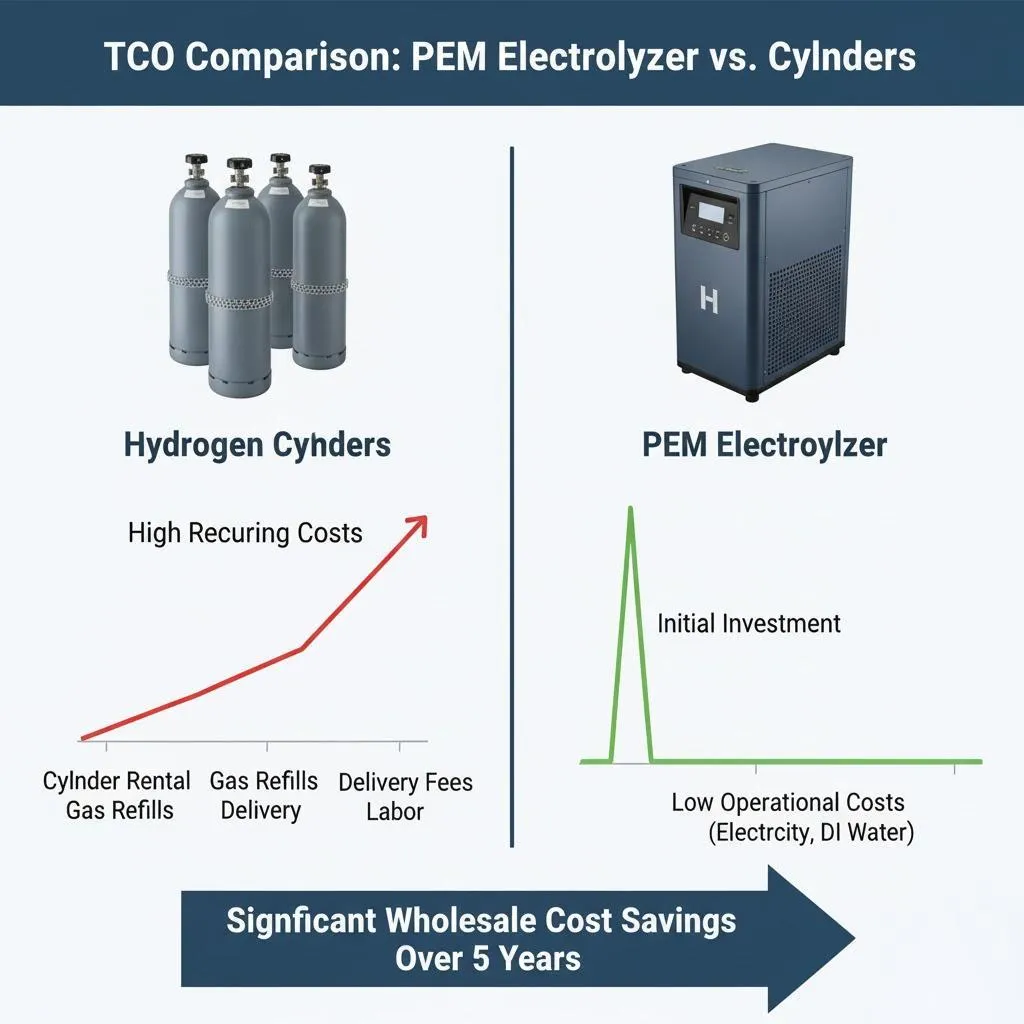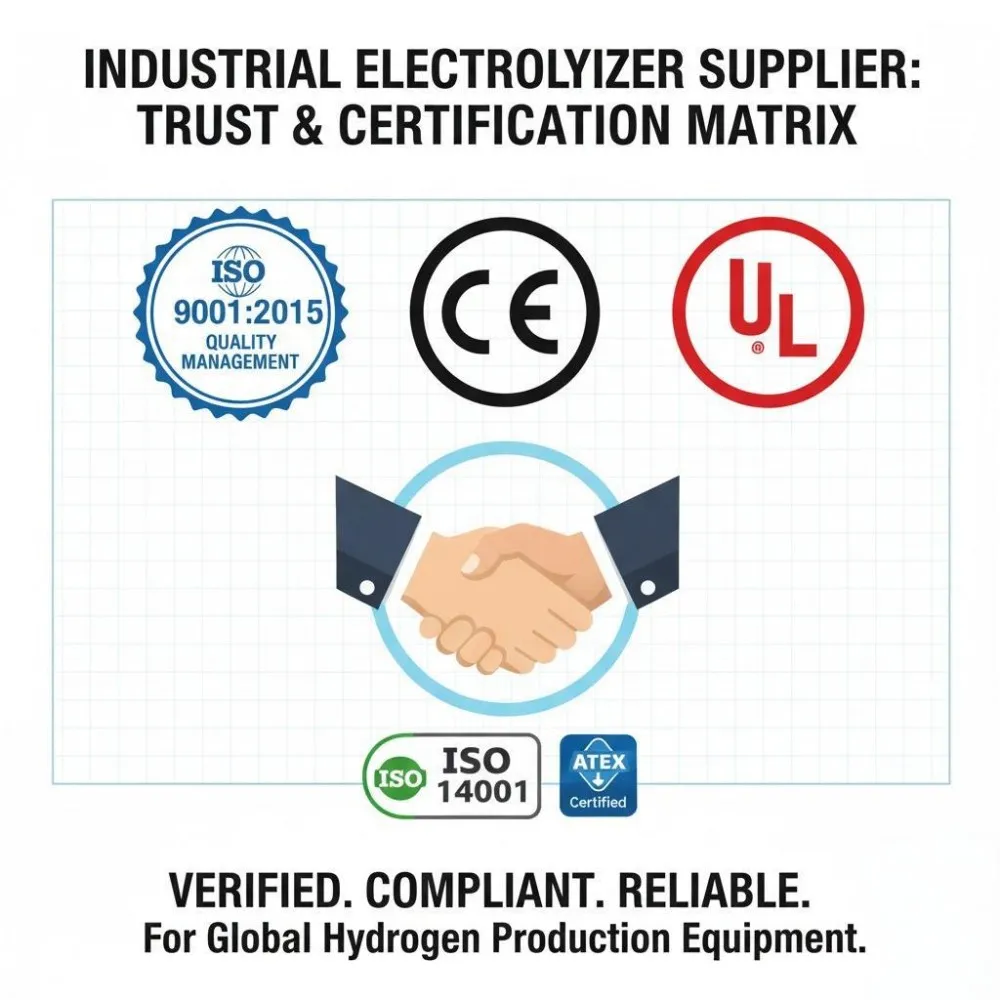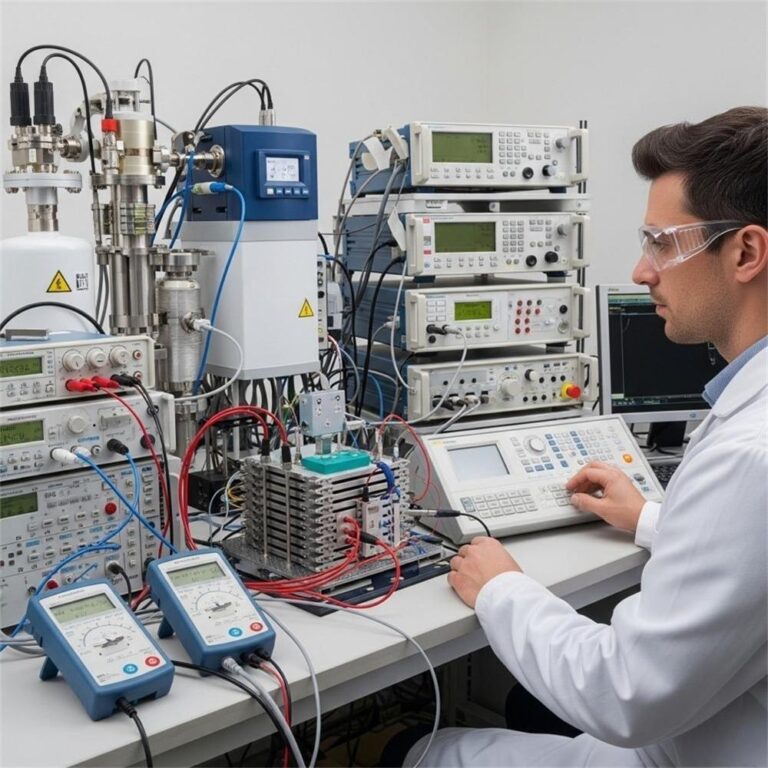I. Introduction
As the world rapidly transitions to cleaner sources of energy, hydrogen is emerging as a game-changer. Among the most promising technologies in this space are hydrogen generators with tanks, which produce and store hydrogen fuel efficiently and safely. These systems offer a way to bridge the gap between renewable energy production and reliable, on-demand power.
Integrated hydrogen storage solutions are particularly significant in this equation. By combining hydrogen generation and storage in a single system, they offer compact, scalable, and user-friendly energy solutions. This is especially important for applications where space, efficiency, and energy reliability are critical.
Green hydrogen—produced through electrolysis powered by renewable sources like wind or solar—is pivotal in reducing carbon emissions across multiple sectors. According to the International Energy Agency (IEA), green hydrogen could account for 13% of global energy demand by 2050, making it a cornerstone of sustainable energy strategies worldwide.
II. What is a Hydrogen Generator with Tank?
A hydrogen generator with tank is a compact, integrated unit that performs two critical functions: generating hydrogen and storing it safely for later use. Typically, the hydrogen is produced via electrolysis, a process that splits water (H₂O) into hydrogen (H₂) and oxygen (O₂) using electricity.
Key Components of a Hydrogen Generator with Tank
- Electrolyzer: The core technology that carries out electrolysis.
- Power Supply: Often linked to renewable energy sources such as solar panels or wind turbines.
- Water Source & Filters: Ensures pure water is available for hydrogen production.
- Integrated Storage Tank: Stores hydrogen in compressed form or via alternative methods.
Types of Hydrogen Generators with Tanks
- PEM (Proton Exchange Membrane) Electrolyzers – Fast response time, ideal for fluctuating renewable power.
- Alkaline Electrolyzers – Cost-effective and mature technology.
- SOEC (Solid Oxide Electrolyzer Cells) – High efficiency at high temperatures, still in development.
- Modular Units – Scalable systems for industrial or commercial use.
These integrated systems outperform setups that require separate generation and storage equipment, reducing complexity and installation costs while enhancing overall safety and reliability.
III. Benefits of Integrated Tank Systems
A. Space Efficiency
Integrated systems are designed to minimize their spatial footprint. A single compact unit combining both generation and storage is especially valuable in urban or constrained environments like residential areas, ships, or electric vehicle (EV) charging stations.
B. Cost Savings
- Installation Cost Reduction: Fewer components mean lower labor and setup expenses.
- Lower Operational Costs: Maintenance and servicing are simplified.
- Energy Savings: Efficient design reduces energy losses associated with transferring hydrogen between separate units.
C. Enhanced Safety
- Built-in pressure regulators, leak detectors, and flame arrestors reduce the likelihood of dangerous incidents.
- The integrated design minimizes hydrogen handling, reducing exposure to high-pressure gas.
D. Scalability
- Many systems use a modular design, allowing users to scale their energy production and storage as needed.
- Ideal for growing businesses or renewable projects with phased deployment.
IV. Storage Considerations for Hydrogen
Storing hydrogen efficiently is just as important as generating it. There are several ways to store hydrogen, each with its pros and cons.
Hydrogen Storage Methods
- Compressed Gas Tanks – The most common method, storing hydrogen at high pressure (up to 700 bar).
- Liquid Hydrogen Tanks – Cryogenic tanks that store hydrogen at −253°C, requiring advanced insulation.
- Metal Hydrides – Absorb hydrogen into metal alloys; compact but heavier and slower to charge/discharge.
Storage Efficiency Factors
- Pressure and Volume: Higher pressures enable more storage but demand stronger materials and more safety precautions.
- Temperature Control: Critical in liquid hydrogen applications and for metal hydrides.
- Material Compatibility: Hydrogen can embrittle metals over time, so specialized materials are essential.
Innovations in Tank Design
- Carbon Fiber Reinforced Tanks – Lightweight and strong.
- Smart Sensors – Monitor pressure, temperature, and hydrogen concentration.
- Advanced Insulation Materials – Improve cryogenic efficiency and safety.
V. Green Hydrogen Applications
Green hydrogen is produced through electrolysis powered by renewable energy, making it completely carbon-free. When stored in tanks and used efficiently, its potential applications are vast and impactful.
A. Transportation
- Fuel Cell Vehicles (FCVs): Hydrogen powers electric motors with quick refueling and long ranges.
- Public Transit: Buses and trains are adopting hydrogen fuel cells, reducing urban emissions.
B. Industrial Processes
- Chemical Feedstock: Hydrogen is essential in refining, ammonia production, and methanol synthesis.
- Steel Manufacturing: Replacing coal with hydrogen in steel production dramatically lowers CO₂ emissions.
C. Power Generation
- Grid Stabilization: Hydrogen can store excess energy from solar/wind and release it on demand.
- Backup Power: Reliable energy storage for hospitals, data centers, and military applications.
VI. Safety Features in Hydrogen Generators with Tanks
Safety is paramount when dealing with hydrogen due to its flammability and high energy content.
Critical Safety Features
- Leak Detection Systems: Continuously monitor hydrogen levels to detect anomalies.
- Pressure Relief Valves: Prevent tank over-pressurization.
- Flame Arrestors: Stop external ignition from entering storage tanks.
- Emergency Shutdown Mechanisms: Automatic shutoff in case of system failure.
Certifications and Compliance
Ensure systems are compliant with:
- ISO 16110-1: For stationary hydrogen generators.
- ASME & DOT Standards: For pressurized tanks and vessels.
- National Fire Protection Association (NFPA) Codes
VII. Maintenance Tips for Optimal Performance
Keeping a hydrogen generator with tank system in top shape ensures safety, efficiency, and longevity.
Routine Maintenance Checklist
- Regular Inspections: Check seals, connections, and sensors.
- Filter Replacements: Replace water and gas filters periodically.
- Electrolyte Management: Top up or replace electrolytes as needed.
- System Monitoring: Use digital dashboards to track performance metrics.
Professional servicing every 6–12 months is recommended to maintain warranty and safety compliance.
Absolutely, let’s continue with the remaining sections of the article.
VIII. Case Studies
Examining real-world implementations provides valuable insights into how hydrogen generators with tanks are transforming energy use across sectors.
Case Study 1: Hydrogen-Powered Public Transit in Germany
In Lower Saxony, Germany, a fleet of hydrogen-powered trains has replaced diesel locomotives. Using green hydrogen stored in integrated tanks, these trains emit only water vapor, significantly reducing air pollution. The system demonstrates the feasibility of using hydrogen in mass transit and the value of onsite hydrogen generation and storage for refueling operations.
Case Study 2: Industrial Plant in Japan
A chemical manufacturing plant in Japan installed a PEM hydrogen generator with a high-pressure tank system. Powered by solar energy, the system supplies hydrogen for onsite chemical synthesis. The result? A 25% reduction in energy costs and near-zero CO₂ emissions from hydrogen usage.
Case Study 3: Off-Grid Power in Australia
In a remote region of Western Australia, a mining facility adopted a hybrid energy system combining solar panels, a hydrogen generator, and an integrated storage tank. This setup powers critical systems at night and during cloudy periods, proving hydrogen’s reliability as an off-grid energy backup.
IX. Future Trends
The hydrogen energy landscape is evolving rapidly, and hydrogen generators with tanks are at the forefront of this shift.
Emerging Technologies
- Solid-State Hydrogen Storage: Promises safer, denser energy storage without high pressure or cryogenics.
- AI-Driven Electrolyzers: Use machine learning to optimize hydrogen production efficiency in real-time.
- Direct Solar-to-Hydrogen Technologies: Eliminate the need for separate power sources and electrolyzers.
Tank Material Innovations
- Graphene Liners: Ultra-light and impervious to hydrogen permeation.
- Self-Healing Materials: Reduce maintenance and enhance system longevity.
Hydrogen’s Role in the Global Energy Mix
With falling renewable energy prices and increasing climate regulations, green hydrogen is expected to become a mainstream fuel for sectors that are hard to electrify, such as aviation, maritime, and heavy industry.
Governments worldwide are investing in national hydrogen strategies, with the EU aiming to install 40 GW of renewable hydrogen electrolyzers by 2030. This commitment signals a strong market for integrated generation and storage solutions.
X. Frequently Asked Questions (FAQs)
1. What is a hydrogen generator with tank?
It is a combined system that produces hydrogen—typically through electrolysis—and stores it in an integrated tank for later use. This design improves efficiency and safety compared to separate systems.
2. How is green hydrogen different from other types of hydrogen?
Green hydrogen is produced using renewable energy sources, resulting in zero carbon emissions. Other types, like grey and blue hydrogen, involve fossil fuels and may emit or capture CO₂.
3. Is hydrogen storage safe?
Yes, when managed properly. Modern systems include safety features such as leak detectors, flame arrestors, and pressure relief valves. Regulatory compliance and routine maintenance ensure safe operation.
4. What are the main uses of hydrogen generators with tanks?
They are used in transportation, industry, and power generation. They’re ideal for fuel cell vehicles, off-grid energy systems, chemical plants, and more.
5. How often does a hydrogen generator need maintenance?
Routine maintenance should be done every 6 to 12 months, depending on usage. Regular inspections and component replacements help ensure long-term reliability.
6. Can hydrogen systems be powered entirely by solar or wind energy?
Absolutely. Many setups use solar panels or wind turbines to provide clean electricity for hydrogen generation, creating a fully renewable energy loop.
XI. Conclusion
Hydrogen generators with tanks are more than just a technological advancement—they are a practical and scalable solution to many of today’s energy challenges. By integrating production and storage, they streamline hydrogen use across industries, reduce emissions, and provide a path toward sustainable growth.
As green hydrogen continues to gain momentum, these systems will play a central role in powering clean transportation, supporting renewable energy storage, and decarbonizing industrial processes. Whether you’re an energy professional, policymaker, or eco-conscious homeowner, now is the time to consider hydrogen solutions for a cleaner, greener future.
🔋 Ready to power up with green hydrogen? Explore modern hydrogen generator with tank systems and see how they can benefit your operation or community.







